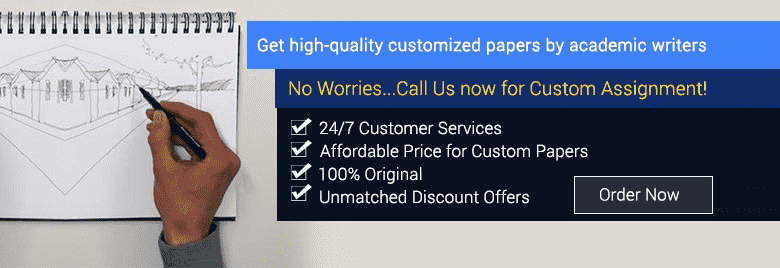TASK 1
1.1 Theory of Learning
Learning is a never ending process as one can learn with the help of different sources and at different age. With this, individual is able to work in an effectual manner and can fulfill its responsibilities in an effectual manner. However, there are various theories of learning that can be applied in order to attain learning. In this context, Bloom's taxonomy of learning is prominent that distinguishes basic enquiry within the education scheme. It involves various objectives that is been determined by educators for their students. It involves three key domains i.e. cognitive, affective and psychomotor (Vangelisti, Daly and Friedrich, 2013). Cognitive domain includes knowledge, comprehension, application, analysis, evaluation and synthesis. It includes learning of lower order thinking skill of intellectual nature. Further, affective domain includes verb to thinking in which learning regarding how people reach emotionally and how they feel each other. It is done through receiving, responding, valuing, organizing and characterizing. Last is psychomotor that aids in learning physical skills which is gained through imitation, manipulation, precision, articulation and naturalization (Joan, 2007).
These domains can be applied to people in health and social care i.e. nursing staff, care workers, doctors and medical assistant. Cognitive domain focus on intellectual and mental learning and therefore, it is applied to doctors and medical assistant who actually offers treatment to patients. This is so because, it is essential for doctors to apply different sort of treatment and approach in order to diagnose the issues and offers them appropriate treatment. This is possible by gaining mental skills or appropriate knowledge over the subject matter. This includes 6 elements. Knowledge is attained by doctors from observation, recall information learned during internship, listing, discovering and reading books over the subject matter. Through this, doctor is able to learn new knowledge. After this, comprehension is done in which learned knowledge is understood, translated, discussed and consulted with other doctors and summarized so that actual output of the same can be attained (Konu and Viitanen, 2008). Based on it, doctors and medical assistant are able to make decision whether to apply new knowledge over patients or not. After this stage, application of learning is done in order to attain effectual results. Here, doctors or their assistant applies new knowledge so that health of patients can be improved in more effective manner. Once it is applied, analysis of the same is done that involves identification of pattern and recognition of trends (Mezirow, 2002). It is then evaluated with the expected and actual results so that new concepts and ideas can be developed based upon it.
Apart from this, affective domain is related to growth in feeling and emotional areas. This domain is applied for care workers who actually offer palliative care to old or child patients. For this, they have to understand the feeling of patients so that better care facility can be offered. It initiates with receiving where individuals recognize the understanding level of patients. After this, responding is done in which care worker learns about the way in which care needs to done. Further, belief and thinking of patients is valued and hence appropriate care method is applied. For this, necessary information and ideas are organized in order to enhance the effectiveness of learning (Viitanen and Konu, 2009). At the end, characterization is done in which attributes of patients is identified by care workers. On this basis, necessary care is offered to them. This certainly leads to attainment of objectives in an effectual manner.
Last is psychomotor domain that relates to manual and physical skills. In the context of health and social care, this domain can be applied for nursing staff who offer medical support to doctors at different stages. It is required for this set of medical staff to learn physical activities that is involved in the treatment so that better treatment can be offered. In this context, 5 elements are involved i.e. imitation from observation, manipulation based on past experiences, precision in offering nursing service, articulation includes finding exact way of performing particular job and last is naturalization in which nursing service is offered in the best possible manner (Lawy and Biesta, 2010). With the help of this domain, nursing staff is able to learn skills from which they can execute its responsibilities in an effectual manner.
1.2 Kolb's Learning Cycle
Kolb learning cycle is a process that reflects the learning stage that is encountered by an individual. It includes concrete experiences (feeling), reflective observation (watching), conceptualization (thinking) and experimenting (doing). However, it is a never ending process that supports continuous learning. Considering the case of Elma (care assistants), she falls in the Kolb learning cycle when feels that for Mr. Smith (90 years old and deaf service user) it is essential to communicate with people on regular basis. It is the first stage of learning and while doing the same, she observed that Mr. Smith is not responding to questions that have been asked by Elma about his family (Snell and Dickson, 2011). It is the second stage of Kolb's learning cycle i.e. reflective observation. Afterwards, Elma conceptualized the things when one of the care assistant said that Mr. Smith can able to lip read. Based on this information, Elma thought of communicating with Mr. Smith in order to make them feel comfortable. With this information, she leads to the stage of active experimentation where she started communicating with him through lip read. In this manner, she completed one stage of learning where she learned about practicing effective communication with Mr. Smith (Mcleod, 2010).
Apart from this, her next learning initiated when felt that Mr. Smith is very talkative. It is her first stage which certainly leads reflective observation in which she watched that Mr. Smith is very talkative and she needs to interrupt him. For this, she thinks of offering him tea so that he can hold with his talks. This is the third stage of learning cycle for Elma. Considering this, she experiment it by asking him for tea and paused for a moment so that responses of Mr. Smith can be attained (Kozma, 2003). Based on this discussion, it can be stated that Elma has completed two stage of learning which certainly helped her in communicating effectually with Mr. Smith. In addition to it, she learnt about the approach from which this communication can be hold as Mr. Smith is very talkative in nature.
1.3 Learning from the Experiences
Based on above discussion done with reference to Kolb learning cycle, it has been found that Elma is able to gain different sort of learning. First of all, she learnt that Mr. Smith is not able to hear her voice. She discussed the same with her colleagues from which she able to learn that Mr. Smith is able to lip read. She then practiced the same and found that he is very talkative. It is the learning which she able to gain with her own experiences. Additionally, Elma thought to interrupt the conversation and for this, she asked for tea. This was another experience that make her learnt about the behavior of Mr. Smith and simultaneously helped her to manage his behavior. At the end, when she was leaving for getting tea for him, she learnt that it is required to pause after asking question and face him so that his response can be noticed. Hence, these were several learning that has been attained by Elma with her own experiences.
Apart from this, there are different models from which learning can be done by Elma. This involves sensory stimulation theory, reinforcement theory, holistic learning theory and experimental. This can be used by Elma in order to learn the working culture and practice at care home from which better and effectual service can be offered to service users. In addition to it, she will be able to learn different aspects of working and understanding the behavior and nature of service users (Hay and Kinchin, 2008). All these methods will gradually boost her care skill through which better service can be offered to different patients. Additionally, Bloom's Taxonomy can also be employed by her in order to develop the understanding and skills in health and social care context (Turner, 2006). Under this, affective domain can be employed through which emotional area of Elma get stronger based on which, she will be able to offer effectual service to different users with similar characteristic with that of Mr. Smith.
Assignment Prime is an online assignment writing service provider which caters the academic need of students.
Get Best Pricing Quotes Free Samples Email : help@assignmentprime.com Order NowTASK 2
2.1 Concepts of learning style
There are several concepts of learning style by the means of which individual can learn new thing and implement in routine life. These are:
Participative – In this concept of learning, individual can learn several things by participating in various works. This learning style generally depends upon the behavior of the individuals and hence it inclined towards behavioral theory. This states that it is the behavior of individual that ignites them to learn certain things. However, working in health and social care there are several things for which individual need guidance in order to operate or perform (Lo and Coskun, 2011). Furthermore, it is considered to be the most effective manner of learning style because in this, individual get chance to improve their skills and knowledge regarding particular tasks.
Avoidant – It is also one of the major concepts of learning style. However, this concept focuses on ignoring the activities that are being held in health and social care in order to avoid performing the tasks (Sandelands and Wills, 2006). This certainly revolves around situated cognitive theory in which individual make decisions on the basis of situations. This signifies that individual doesn't want to learn that are not belongs to their job roles.
Competitive – Operating in corporate world, it is very important for every individual to be competitive so that they can perform well. However, being competitive assist individual to set the benchmark for others regarding performing tasks and duties and it will help overall health and social care organization to attain provide better services. This learning style includes cognitivism in which people makes efforts in order to learn new things so that overall competency can be increased. This aids in developing an environment where individual thrive so learn new set of work in order to remain competent.
Collaborative – Collaborative learning style is similar to participative, however, the minor difference between both these learning styles is that in participative style, individual can learn from its experience partner or senior (Konu and Viitanen, 2007). But in collaborative learning style, same level of individuals are merged together in order to form a team and then perform tasks. Therefore, in collaborative, individual can learn from its experience and working habits. This learning style underpins theory of communities of practice in which people with common concern shares views and interact on regular basis so that collaborative learning can be done. This aids in attaining common goals in effectual manner (Lawy and Biesta, 2010).
2.2 Factors that influence effective learning development
There are several factors that can influence effective learning development and it can be in positive or negative manner. These are:
Clarity – Clarity is one of the major factors that an individual need to have before starting any work. However, working in health and social care, it becomes more significant to have clarity of work. However, if there is un-clarity regarding work then individual may face several problem in accomplishing tasks and duties and vice-versa (Agee, 2005).
Task orientation – It is essential for an employer to understand and evaluate the capability and skills of an individual before assigning him or her work. However, if an individual in not working in his or her job profile orientation then they might face several issues in learning new things. Therefore, it is important to have task oriented approach in delegating the tasks and duties.
Variety – Individual working in variety of work might have benefits as they may learn wide range of things in order to enhance their skills and abilities. On the other hand, it may prove to be a costly approach because this may influence the overall learning structure of an individual as he or she might not be focusing on one task in health and social care organization (Braithwaite and Pawsey, 2008).
Time Availability – It is also one of the major concerns for individual working health and social care. Working in such institute, they need to ensure that they provide appropriate services to clients and users. Therefore, it is essential for them to have availability of proper time so that they can concentrate and focus effectively and efficiently in order to learn more things (Jones, 2010).
Stimulating Learning - In addition to above mentioned factors, capabilities of educator in health and social care also influences the learning. If educator is able to stimulate things in desired manner, then it will essentially boost overall learning of individuals.
Conceptualization - Also, it is required to conceptualize the things in order to conduct learning development. This helps in gaining basic knowledge about the subject matter from which individual is able to perform job roles in effectual manner within health and social care setting.
2.3 Use the VARK system to assess your own learning style
Fleming’s model sometimes referred to VARK model of learning style. However, there are different styles of every individual to learn something. These are:
Visual learners – In general terms, visual learner best learns by seeing things and analyzing them. Therefore, there are several things that plays role of tool in visual learning such as graphics displays, diagrams, illustrations, handouts and video etc. In health and social care, it can play a significant role for beginners like me to enhance my knowledge (Field and Leicester, 2003).
Aural learners – In this type of learning style, learner learns best by hearing information. In health and social care, I need to hear what my superior people are doing as well as listen to them for better learning.
Reading learners – This type of learning style focus on words. Reading learners prefer to take information displayed as words and then acquire them for long term aspects. Furthermore, for me reading is good because for me learning material that are primarily used is text based and which can be again and again used to enhance learning (Carolyn, 2011).
Kinaesthetic learner – In general terms, kinaesthetic learners learns best by touching and doing. Therefore, working in health and social care, I have to ensure that this type of learning probably is the best. Furthermore, it gives me confidence regarding using all the medical equipments (Bannister, 2011).
2.4 Analyze the various influences that affect your learning in relation to the learning theory
There are various factors that may influence my learning in relation to the learning theory VARK system.
Motivation – Motivation is the major factor for every individual, it is essential for me to get motivated by my seniors regarding what type of learning style I should pick in enhancing my knowledge and skills regarding health and social care (McSherry, 2008). Hence, motivation is one of the influences that affect my learning style. It is required to motivate me in order to take certain decision for learning and hence this is the factor that affect my learning theory (Snell and Dickson, 2011).
Opportunity – In order to get success, it is essential for me to acquire every opportunity given to me regarding learning. Therefore, getting better opportunity will assist me to enhance my knowledge and skill so that I can attain success in my life (Mulholland and Turnock, 2012). However, if I not get any opportunity then it demotivates me and also affect my work routine.
TASK 3
3.1 Strategy for delivering and assessing learning
For delivering and assessing learning outcomes from organizational training, there is a need of rational approach. Learning objectives includes the goals or major points on which the insightful information will be provided to the trainees. The training staff should have clear idea about learning objectives so that training programs can be made successful. Health and social care in UK is witnessing major changes due to dynamic factor. There is a need to deliver proper information through training programs so that challenges faced by industry or the care home in which the training is provided. In order to deliver and assess the information, two-way communication strategy will be used. Two-way communication process ensures that the delivered information is correct and also assists in obtaining feedback from the targeted people/parties (Day, 2009). Being an assistant manager, it is expected that all activities and information are coordinated. Thus, it will also assist the manager to take feedback from trainers and trainees that they are given/being provided the training on particular learning objectives. Thus, using two-way communication process will be appropriate strategy for delivering and assessing learning objectives (Clouston and Westcott, 2005).
However, the two-way communication process is an effective strategy to be implemented in the organization but there are various disadvantages of the same. A two-way communication process slower downs the organizational communication process. Further, it consumes more time to take feedback by the assistant manager may not be practically implemented. But looking at its advantages, it can be said that effective use of this selected strategy, effective delivery and assessment of learning objectives can be done (Papadopoulos, 2011). Thus, by evaluating the selected strategy, it can be said that even after having certain drawbacks, effective implementation of this strategy can be worth bearing for assistant manager.
3.2 Barriers to learning within the Workplace
There are various barriers to learning in the workplace which certainly affects the operation and same is the scenario under heath and social care. Among this, socio economic is the factor that act as a barrier. It is evident that individual with different backgrounds possess different state of mind and this certainly acts as a barrier to the leaning. This is so because, individuals resist from learning and hence it leads deviation of learning program. Moreover, it can impact on the relationship among employees through which overall efficiency of the team can affect (Joan, 2007). Further, access to learning material is another sort of barrier. This can affect the working of care home and may leads to deviation in the subject matter. Additionally, attitude of learner is another sort of barrier that can hamper the learning process. If learner is ready to learn different sort of activity and possess favorable attitude then it certainly helps boost the learning activity. However, if learner is not ready to adapt as per the learning program, then it leads deviation and hence act as a barrier (Carolyn, 2011). Beside this, learning disability such as dyslexia is another sort of barrier that cannot be avoided at one instance. Further, language and communication also act as a barrier to learning program. With this, overall efficiency of the program gets hampered and therefore, appropriate language is needed to involve for learning program.
3.3 Methods of identifying individual learning needs
Learning need analysis
It is the most common method which is used in various companies including health and social care organizations. The learning needs are directly analyzed by individual assessment so that the major areas where individual is lacking can be identified in form of his/her personal learning needs (Vangelisti, Daly and Friedrich, 2013).
Skill audit
Another method of learning need identification is skill audit in which various skills lacking in an individual are identified. The employers in health and social care sector analyze the needs by outlining various skills required to perform job in this sector. Further, the skills which are lacking in individuals are recognized on one to one basis.
Diagnostic tools for literacy
The diagnostic tool for literacy is also essential method of highlighting individual learning needs. By using diagnostic tools of literacy, the areas where individual needs for training are required because of lack of knowledge can be highlighted (Hay and Kinchin, 2008).
Appraisal
It refers to the system in which efficiency of an individual is assessed by appraising a person/individual. Appraisal highlights the points of both strengths and weaknesses which can better provide the idea regarding individual training, development and learning needs.
3.4 Approaches to support Individual learning needs
There are several approaches which can be used to support individual learning needs in health and social care. These are:
- By building trust, I can effectively teach students regarding safeguard and train them appropriately.
- If I could be consistent regarding my method of teaching in care home then I can attain success and help other to support individual learning needs (McSherry, 2008).
- Furthermore, being supportive will allow me to gain the trust and loyalty of the students as well as I can enhance their skills and knowledge effectively and efficiently.
- In addition to it, feedback and suggestion can be offers to individuals in order to identify the learning needs. With the help of it, areas that need improvement can be assessed which can help in boosting the competency of the individuals.
- Moreover, technical aids can also be applied as part of supporting individual needs. Under this, training and development session can be organized so that they can learn new things. This will help in gaining tailored information about different subjects matter (Mulholland and Turnock, 2012).
- Teaching can also be done for the purpose of supporting individual learning. In this context, mentors can be assigned to individual so that proper teaching activities can be impart.
3.5 Designing the workplace learning program
The workplace learning program is being designed for the care home. The program is being started with identifying the scope of learning programs. Here, manager of care home has to make the decision that how much content they should have to use in their learning program. The selection with respect to the specific type of content depends on the type of audiences that are interested in taking training. For example, complex material will be used for those employees that have large number of experience in the field of health and social care. In the similar way, simple content that can be easily understood by the employees can be used for those learners that are new and does not have much experience in the given field. After this, decision with respect to the type of resources would be used will be taken by manager for the purpose to deliver the training programs (Konu and Viitanen, 2007). It comprises of following such as work based problem, coaching, online materiel and mentoring etc. Among all identified technique, work based problem seems most suitable resource for improving the learning of health and social care employees. This is because it is seen that employee would learn the thing in the faster manner if they are to be shown the practical implementation with respect to the any kind of aspect (Mulholland and Turnock, 2012). This can be made possible through the resource like work based problem.
3.6 Relevant teaching strategies
There are various types of teaching strategies available for me such as:
Scaffold instruction – In this type of teaching style, I have to give full support to students at initial stage and as the time passes, I have to provide independence to students so that they can try their own way of accomplishing tasks.
Cooperative learning – This type of learning can be defined as I have to cooperate with students in order to read, write and learn the safeguards information appropriately. However, I have to be their teacher, mentor, peer etc. to make them learn each aspects of safeguard (Agee, 2005).
REFERENCES
- Day, C., 2009. Developing Teachers: The Challenges of Lifelong Learning. Psychology Press.
- Field, J. and Leicester, M., 2003. Lifelong Learning: Education Across the Lifespan. Psychology Press.
- Agee, J., 2005. Literacy, aliteracy, and lifelong learning. New Library World. 106(5/6). pp.244 – 252.
- Hay, D. and Kinchin, I., 2008. Using concept mapping to measure learning quality. Education + Training.
- Konu, A. and Viitanen, E., 2008. Shared leadership in Finnish social and health care. Leadership in Health Services.
- Mezirow, J., 2002. Transformative Learning: Theory to Practice. New Direction for Adult and Continuing Education.
- Papadopoulos, I., 2011. Health needs: policy plan and school practice in Greece. Health Education.
- Sandelands, E. and Wills, M., 2006. Creating virtual support for lifelong learning. The Learning Organization.
















